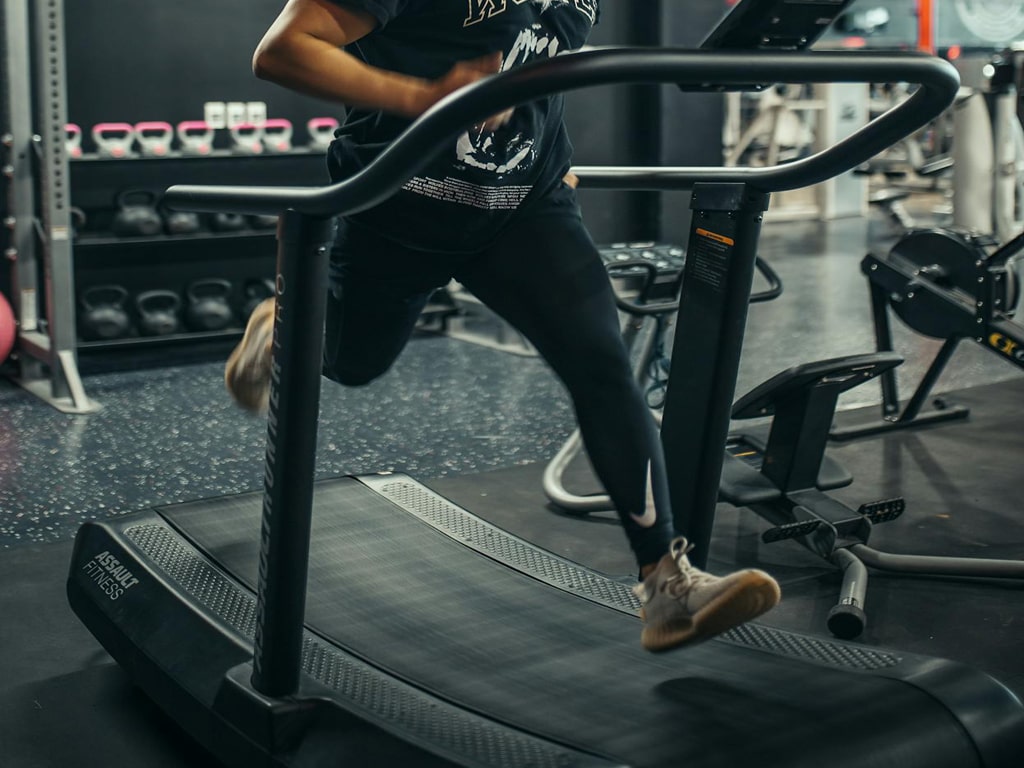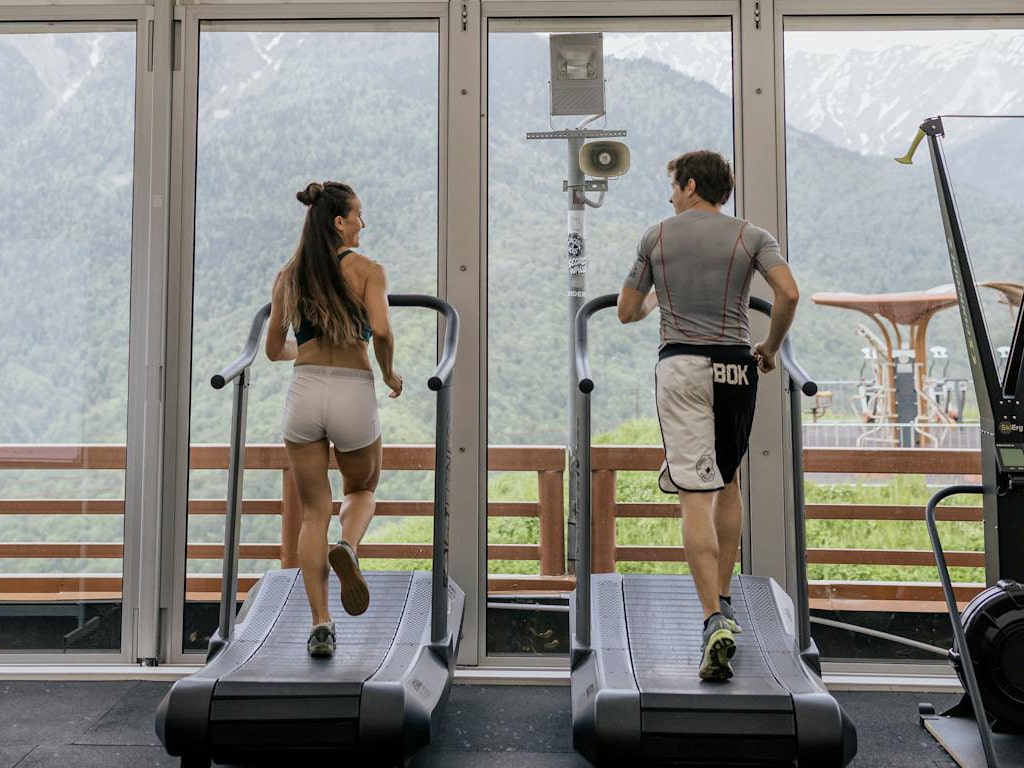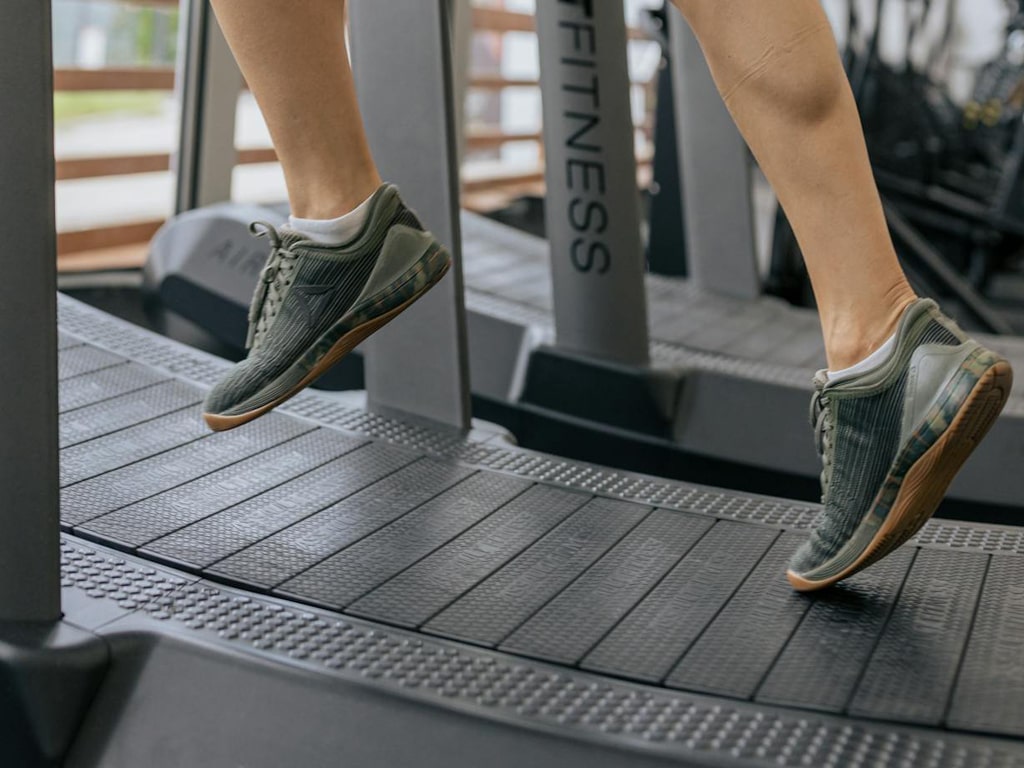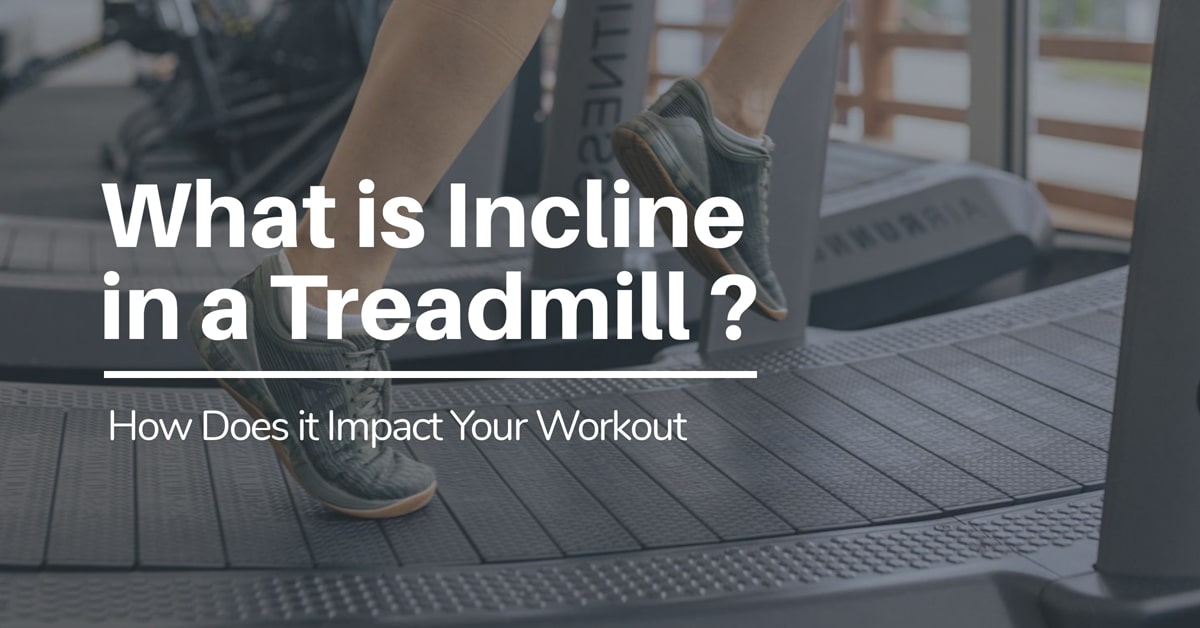Incline on a treadmill makes your workouts tougher. This means the front of the treadmill lifts up, like walking uphill. It’s simple to push a button and lift it higher or lower while you walk or run.
Using incline helps your heart work harder, uses different muscles in your legs, and can even make you burn more calories than walking flat. If you go at the same speed but add an incline, you might use up to 30% more energy! Doctors say that putting a small slope, like 3-5%, is good for losing weight.
By doing this often, people can lose weight faster than just running without any incline.
When we tackle hills outside or on machines, it also makes our leg muscles stronger. This is especially true for parts of our legs called hamstrings and calves. These workouts are not only about burning fat; they also help tone your muscles and improve how well we breathe during exercise—good stuff if we want to be healthy!
But when you do lots of uphill work, it could hurt some muscles and joints sometimes—especially if someone has injuries or health problems. So learning how to use incline right is key! You can mix steep parts with easier ones during one workout session by switching back and forth.
Now that we know why ramps on treadmills matter so much let’s learn ways to include them safely in our routines for better results over time! Keep reading as I show how making these changes keeps things exciting and works wonders for getting fit! Let’s get moving up those virtual hills!
What is Incline in a Treadmill?
The incline on a treadmill refers to the angle at which the running surface is elevated. This can be adjusted to simulate walking or running uphill, adding intensity to your workout.
1. Definition and explanation
Incline on a treadmill is like walking uphill. It makes the front of the treadmill tilt up, so you have to climb as you walk or run. You can change the incline to make your workout easier or harder.
A higher incline works your muscles more and helps you burn more calories.
To adjust the incline, use the buttons on your treadmill’s console. Most treadmills have quick-set options for common grades, like 3-5%, which are great for weight loss. By raising or lowering the deck, you challenge different muscles in your legs and boost your heart rate without having to go faster.
2. How to adjust the incline on a treadmill
To adjust the incline on a treadmill, first, locate the incline button or option on the treadmill’s control panel. Next, use the up and down arrows to increase or decrease the incline level gradually. Ensure that you start at a lower level and gradually increase to avoid strain. Additionally, refer to your treadmill’s manual for specific instructions on adjusting the incline settings. Remember not to overexert yourself when adjusting the incline, especially if you are new to using an inclined treadmill. Also, consider consulting a fitness professional for guidance on incorporating incline into your workout routine.
How Does Incline Impact Your Workout?

Incline on a treadmill can impact your workout in several ways, including boosting your heart rate, targeting specific muscle groups, increasing calorie burning, and reducing impact on joints.
Understanding how incline affects your workout can help you maximize the benefits of using a treadmill for exercise.
1. Boosts your heart rate
Walking or running on an incline boosts your heart rate, providing a more intense cardiovascular workout. This increase in heart rate helps improve overall endurance and stamina, making your workout more challenging and effective.
Additionally, the elevated heart rate also leads to greater calorie burning, aiding in weight loss and enhancing cardiovascular fitness. Walking uphill on a treadmill can raise your heart rate significantly compared to exercising on a flat surface, offering a more efficient way to achieve your fitness goals while engaging different muscle groups and increasing the intensity of your workout.
2. Targets specific muscle groups
Increasing the incline on a treadmill engages specific muscle groups, such as the glutes, hamstrings, and calf muscles. This added resistance activates these muscles more intensely than walking or running on a flat surface, leading to greater strength and toning in the lower body.
Incline workouts are particularly effective for targeting specific muscle groups like the glutes, hamstrings, and calves. The upward slope creates a greater demand on these muscles, helping to enhance their strength and definition over time while also increasing overall calorie expenditure.
3. Increases calorie burning
Walking or running on an incline increases calorie burning significantly. This is because your body expends more energy when working against gravity, resulting in a higher calorie expenditure.
In fact, engaging in incline workouts can help burn up to 30% more calories compared to exercising on a flat treadmill at the same speed and distance. This makes incline treadmill walking or running an efficient way to boost calorie burning during your workout routine, aiding weight loss goals while also providing additional benefits such as muscle activation and cardiovascular improvements.
Incorporating incline into your treadmill workout not only diversifies your routine but also maximizes the efficiency of your exercise session by ramping up calorie burning. Additionally, it adds an extra challenge that engages different muscle groups and offers heightened physical benefits without requiring longer workout durations.
4. Reduces impact on joints
Walking or running on an incline treadmill can reduce the impact on your joints compared to exercising on a flat surface. The upward angle of the treadmill decreases the stress on your knees, hips, and ankles while still providing an effective workout for your muscles.
This is especially beneficial for individuals with joint conditions or those recovering from injuries looking to minimize impact during their cardio workouts and improve overall joint health.
Moving forward to “Benefits of Walking on an Incline,” let’s explore how this type of exercise enhances cardiovascular endurance and strengthens lower leg muscles.
Benefits of Walking on an Incline
Walking on an incline offers increased cardio endurance, strengthens lower leg muscles, and adds variety to your workout routine. Read on to discover how incorporating incline into your treadmill workout can elevate your exercise experience.
1. Increased cardiovascular endurance
Incline walking or running on a treadmill can significantly increase your cardiovascular endurance. This is because working against gravity at an incline challenges and strengthens the heart and lungs, improving overall endurance.
It also enhances the body’s ability to transport oxygen-rich blood to muscles, contributing to better stamina during workouts. In fact, incline workouts are found to be an effective way of elevating cardiovascular fitness and reaping substantial health benefits.
With regular incline treadmill training, individuals can experience improved aerobic capacity and efficient circulation, leading to enhanced endurance levels over time. Additionally, engaging in uphill treadmill exercises has been shown to enhance the heart’s strength and efficiency in pumping blood throughout the body.
2. Strengthening lower leg muscles
Walking or running on an incline activates and strengthens the muscles in your lower legs, including your calf muscles. This helps improve your overall leg strength and stability, leading to better balance and reduced risk of injury during physical activities.
Incline training also targets the muscles in your shins and ankles, promoting a more comprehensive lower leg workout that can enhance your overall athletic performance.
Incorporating incline workouts into your exercise routine can help you build muscle endurance in your lower legs, allowing you to take on more challenging activities without getting fatigued as quickly.
3. Adding variety to your workout
Incorporating incline walking or running on a treadmill introduces variety to your workout routine, challenging different muscle groups and intensifying your cardiovascular exercise.
By adjusting the incline setting, you can simulate uphill terrain, enhancing balance, posture, and lower body strength. Varying the incline levels also keeps your workout engaging and prevents monotony while targeting specific muscles like glutes, hamstrings, and calves.
Integrating hill training into your treadmill workout adds diversity by providing an opportunity for interval training sessions. This helps break up the routine of flat-surface workouts and keeps you motivated by offering new challenges that contribute to improved overall fitness.
Also Watch :- 6 Best Treadmill under 50000 in India for Home Gym
Drawbacks of Walking on an Incline

Walking on an incline can potentially strain muscles and joints, especially for those who are not used to it or have certain injuries or conditions. It may also be more difficult for some individuals to maintain proper form while walking uphill on a treadmill.
1. Potential strain on muscles and joints
Walking or running on a treadmill incline can exert extra pressure on your leg muscles and joints. This added strain may lead to fatigue, overuse injuries, and discomfort in the knees, ankles, or hips over time.
However, using proper footwear, maintaining good form, and gradually increasing the incline level can help minimize the risk of strain and injury during incline workouts.
Make sure to always listen to your body’s cues and adjust the intensity as needed to prevent excessive strain. Now let’s explore ways to effectively incorporate incline into your treadmill workout while minimizing potential strain.
2. Difficulty for those with certain injuries or conditions
Certain injuries or conditions can make walking on an incline challenging. For instance, individuals with knee pain or arthritis may find uphill walking uncomfortable due to the increased stress on the joints.
Similarly, those with lower back issues might experience discomfort while walking on an incline as it can put strain on the lumbar region. Incline workouts could also pose challenges for people with balance issues, where navigating an inclined surface may increase the risk of falls and injuries.
Furthermore, individuals recovering from ankle injuries might face difficulties when walking on a treadmill at an incline due to the additional pressure placed on the affected area.
How to Incorporate Incline into Your Treadmill Workout

Incorporating incline into your treadmill workout can be as simple as adjusting the settings to a slight uphill grade. This can help you target specific muscle groups, increase calorie burning, and add variety to your routine.
1. Appropriate incline levels for different fitness goals
For beginners aiming to build endurance and burn calories, a 1-3% incline on the treadmill is suitable. This mild slope helps increase heart rate and calorie expenditure without overwhelming new exercisers.
Intermediate fitness enthusiasts looking to enhance their cardiovascular strength and leg muscles can benefit from a 3-6% incline. This level of incline provides a moderate challenge for improved muscle activation and overall fitness gains.
Advanced individuals seeking high-intensity workouts for weight loss or performance enhancement should consider using a 6-9% incline. This steep elevation significantly intensifies the workout, boosting calorie burning by engaging more muscle groups and enhancing cardiovascular endurance at an accelerated pace.
2. Tips for proper form
When adjusting the incline levels for your treadmill workout, it’s essential to maintain proper form to maximize the benefits and reduce the risk of injury. Here are some tips for maintaining proper form during an inclined treadmill workout :-
- Keep your posture straight with your shoulders relaxed and back.
- Engage your core muscles to support your spine and maintain stability.
- Land on the middle of your foot with each step to ensure even distribution of impact.
- Avoid leaning too far forward or backward, as this can strain your lower back and hamper balance.
- Use the handrails lightly for support if needed, but avoid leaning heavily on them as it may alter your posture.
3. Alternating between flat and inclined intervals
Alternate between flat and inclined intervals to maximize your treadmill workout :-
- Start with a 5-minute warm-up on a flat surface to prepare your muscles and increase blood flow.
- Increase the incline to a moderate level, around 3-5%, for 10 minutes to engage different muscle groups and boost calorie burning.
- Return to a flat surface for 5 minutes of brisk walking or light jogging to recover and catch your breath.
- Gradually raise the incline to a challenging level, such as 8-10%, for 5-7 minutes to push your cardiovascular endurance and strengthen lower leg muscles.
- Lower the incline back to a moderate level for another 10 minutes of walking or running to maintain an elevated heart rate while reducing impact on joints.
- Finish with a 5 – minute cooldown on a flat surface to gradually bring your heart rate down and prevent muscle soreness.
4. Utilizing pre-programmed incline workouts
Transitioning from alternating between flat and inclined intervals to utilizing pre-programmed incline workouts can provide a structured approach to your treadmill routine. Many treadmills offer preset programs that automatically adjust the incline, allowing you to experience varying levels of intensity and simulate outdoor terrain such as hills or mountains.
These pre-programmed incline workouts can help you challenge yourself, burn more calories, and improve your overall fitness level without having to manually adjust the settings.
Incorporating pre-programmed incline workouts into your treadmill routine can add diversity and progression, allowing you to experience different terrains and intensities while avoiding monotony in your exercise regimen.
5. Final thoughts and recommendations.
Consider adding incline treadmill workouts to your fitness routine for an extra challenge and increased calorie burn. If you’re aiming for weight loss, incorporating a 3-5% incline can be beneficial.
However, always listen to your body and avoid overdoing it, especially if you have any muscle or joint concerns. Gradually build up the intensity of your incline workouts to avoid strain and enjoy the benefits of improved cardiovascular endurance and strengthened lower leg muscles.
Conclusion
Elevate your workout with treadmill incline for maximum impact. Get ready to target specific muscles, increase calorie burning, and boost cardiovascular endurance. Challenge yourself by incorporating incline intervals or pre-programmed workouts.
Take your fitness journey to new heights with the power of treadmill incline!
FAQs
1. What does incline on a treadmill mean?
Incline on a treadmill is the treadmill gradient that simulates walking uphill or incline running, making your workout harder.
2. What muscles do I work when I use the incline setting?
Using an incline targets your glutes, hamstrings, and lower leg muscles more than flat walking or running.
3. Can incline treadmill walking help me lose weight?
Yes, walking uphill on a treadmill can help with weight loss because it burns more calories than walking without an incline.
4. Are there benefits to my heart when using an incline?
Definitely! Incline workouts have cardiovascular benefits which improve your heart health by making it work harder during exercise.
5. Does an inclined workout make my balance better?
Walking or running at an incline helps improve your balance and posture since you have to stabilize yourself against the slope.
Post Author :- Anil Sharma ( Dedicated Treadmill Researcher )
Hello, myself Anil Sharma. I am a blogger and research over best treadmills and treadmill information especially in India form last 5 years. The result of my this research is this blog, that is in front of you. My blog motive is to provide the pointed information on treadmills and best treadmills in India to you, with the help of this information you can know more about treadmill the great fitness equipment of the present time, and to choose a right treadmill for your home or gym.
View all posts by Anil Sharma →
